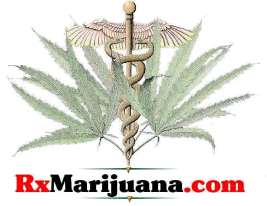|
This site is devoted to the exchange of
information about the use of marijuana as a medicine. We are
members of the faculty of the Harvard Medical School who
have been studying marijuana for many years.
Dr. Grinspoon is the author of Marihuana Reconsidered,
Harvard University Press, 1971, revised edition 1977,
recently republished with a new introduction.
We are co-authors of Marihuana, the Forbidden Medicine,
published by Yale University Press in 1993, available in
paperback at 1-800-987-7323. The book has been translated
into nine languages. A revised and expanded edition, more
than 60% larger than the first edition, was published in
1997. Excerpts from this book are
posted on the website.
Both Marihuana Reconsidered and Marihuana, the
Forbidden Medicine are available online from Amazon or
Barnes and Noble. Purchase Marihuana Reconsidered at
Amazon.com or
Barnesandnoble.com. Purchase Marihuana, the
Forbidden Medicine at
Amazon.com or
Barnesandnoble.com.
In June of 1995 the Journal of the American Medical
Association published our paper, "Marihuana
as Medicine: A Plea for Reconsideration." We have
included it, along with 3 articles in Playboy
magazine (1,
2 and
3) and an unpublished
article, "Marihuana: An Old
Medicine of the Future," as well as several additional
medical
marijuana resources we hope you find
to be of interest.
Since marijuana is largely a folk medicine, not yet
generally recognized by the medical establishment, the
people who know most about it are those who use it on their
own. The purpose of our website is to gain access to that
body of knowledge and share the information with patients
and physicians.
We are looking for three kinds of information:
- We want to learn more about the symptoms and medical
problems for which people have found marijuana useful
and how it compares with conventional drugs in the
treatment of particular symptoms or syndromes. We will
post some of our readers' stories and experiences on
this website. Nothing will be posted without the
contributor's permission, as indicated in the
submission. Contributors may remain anonymous if they
wish, although most people quoted in our earlier
publications have chosen to use their names.
- We would also like to learn more about the different
ways of using marijuana medically -- the advantages and
disadvantages of various smoking devices and alternative
methods of preparation, including oral use,
suppositories, poultices, compresses, and topical
solutions or salves.
- New: Recent Development of Medicinal Interest in Strains High in Cannabidiol: There is a recent development in the field of medical marijuana which may ultimately add another dimension to its usefulness as a medicine. It is now believed that there may be as many as one hundred cannabinoids, about most of which we know very little. Tetrahydrocannabinol is the cannabinoid most responsible for the psychoactive effects, and for that reason became the holy Grail of the growers in California, the Netherlands and in British Columbia. Over the last four decades, driven by the demands of recreational users who wanted more potent strains, they have been able to breed strains that contain percentages of THC which are considerably higher than those which were available in the 60s. However, as the level of THC went up, that of cannabidiol (CBD) went down, so that at the present time both medical and recreational users have available to them strains which are proportionately very high in THC and very low in CBD. In the meantime, evidence that CBD is important therapeutically has been accumulating to the point that some growers are now developing, as rapidly as they can, strains with increasing levels of CBD. The growing interest in CBD is driven by the increasing awareness of its anti-inflammatory and antioxidant capacities; whether, as some suspect, it has more unique and specific benefits remains to be seen. But, independent of its specific therapeutic utilities, it has one characteristic which will be very important to many medical marijuana patients: it is not in the least bit psychoactive and, in fact, is antagonistic to the psychoactive properties of THC. This will make it possible for medical marijuana patients who do not like the high to be more comfortable with this medicine, and for those who have to medicate with it during their working day to use a high-CBD strain. High-CBD strains are now becoming available in California, Colorado and Montana. The developers of two such strains, Harlequin and True Blueberry x OG Kush, made clones available in 2010 to expedite widespread patient access to high CBD strains. Two journalists, Fred Gardner and Martin Lee, have developed a website, ProjectCBD.org which, among other things, will provide current information on the availability of high CBD strains as well new information on their medicinal effectiveness. We (rxmaijuana.com) will be especially interested in the accounts of patients as they gain experience with high-CBD strains.
To share information with us, please visit the
Information Exchange. See
additional guidelines for a fuller
explanation of our aims and interests. Recently we have
posted some new personal accounts
by visitors to the website, as well as other visitors'
comments and observations. |
|

